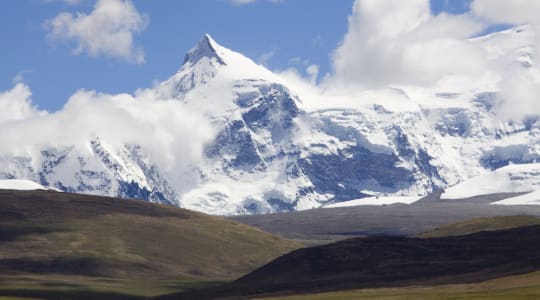
Shishapangma, also known as Gosainthān, is the 14th highest mountain in the world, with a summit elevation of 8,027 meters (26,335 feet) above sea level. It is located in the Himalayas on the border between Nepal and Tibet (China), and it is the only 8,000-meter peak entirely within Tibet.
The name Shishapangma is derived from the Tibetan language, and means "the mountain with a pointed crest". The mountain is considered sacred by the Tibetans, and it is one of the four holy mountains of Tibet.
The first successful ascent of Shishapangma was made in 1964 by a Chinese expedition led by Xǔ Jìng. Since then, the mountain has been climbed by several expeditions, and it is considered a challenging and technical climb that requires high-altitude mountaineering skills.
Shishapangma is known for its imposing and distinctive shape, with a long summit ridge that culminates in a sharp peak. The area surrounding the mountain is home to several ethnic groups, including the Tibetans, who have a rich cultural heritage and a long history of mountaineering.
Shishapangma is a popular destination for high-altitude mountaineering, with several routes leading to the summit. The most common route is the Normal Route, which follows the northwest ridge of the mountain, but there are several other technical and challenging routes for experienced mountaineers.
Explore Near Shishapangma
Discover 1 attraction within 75km. Perfect for planning day trips, finding connecting flights, or discovering new destinations to explore during your visit.
Nearby Attractions & Places to Visit
1 destination within 74.2km from your location

Cross-Border Adventures Near Shishapangma
Discover cross-border adventures near Shishapangma. Explore neighboring countries with similar attractions and extend your travel experience across borders.








And 8 more neighboring countries